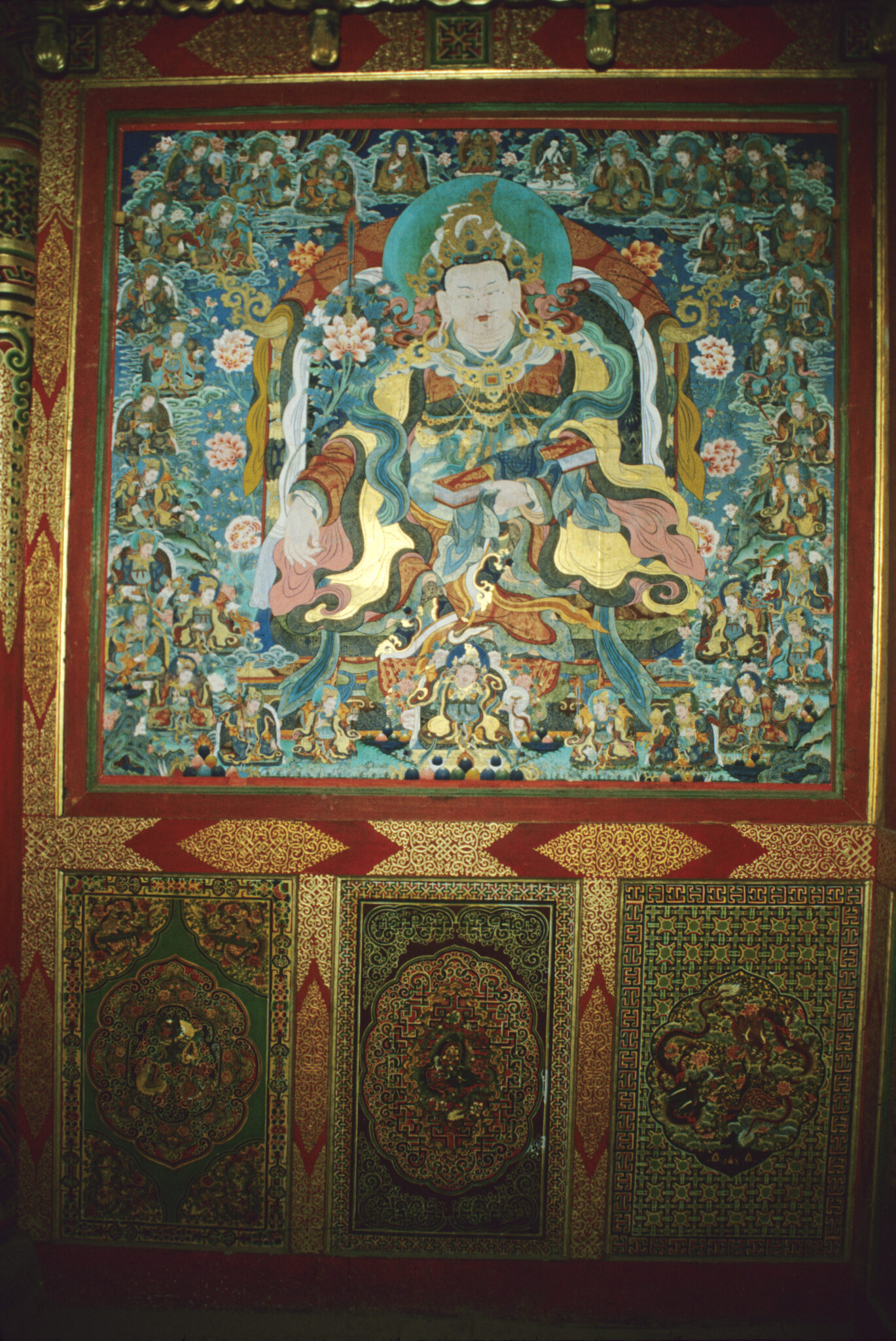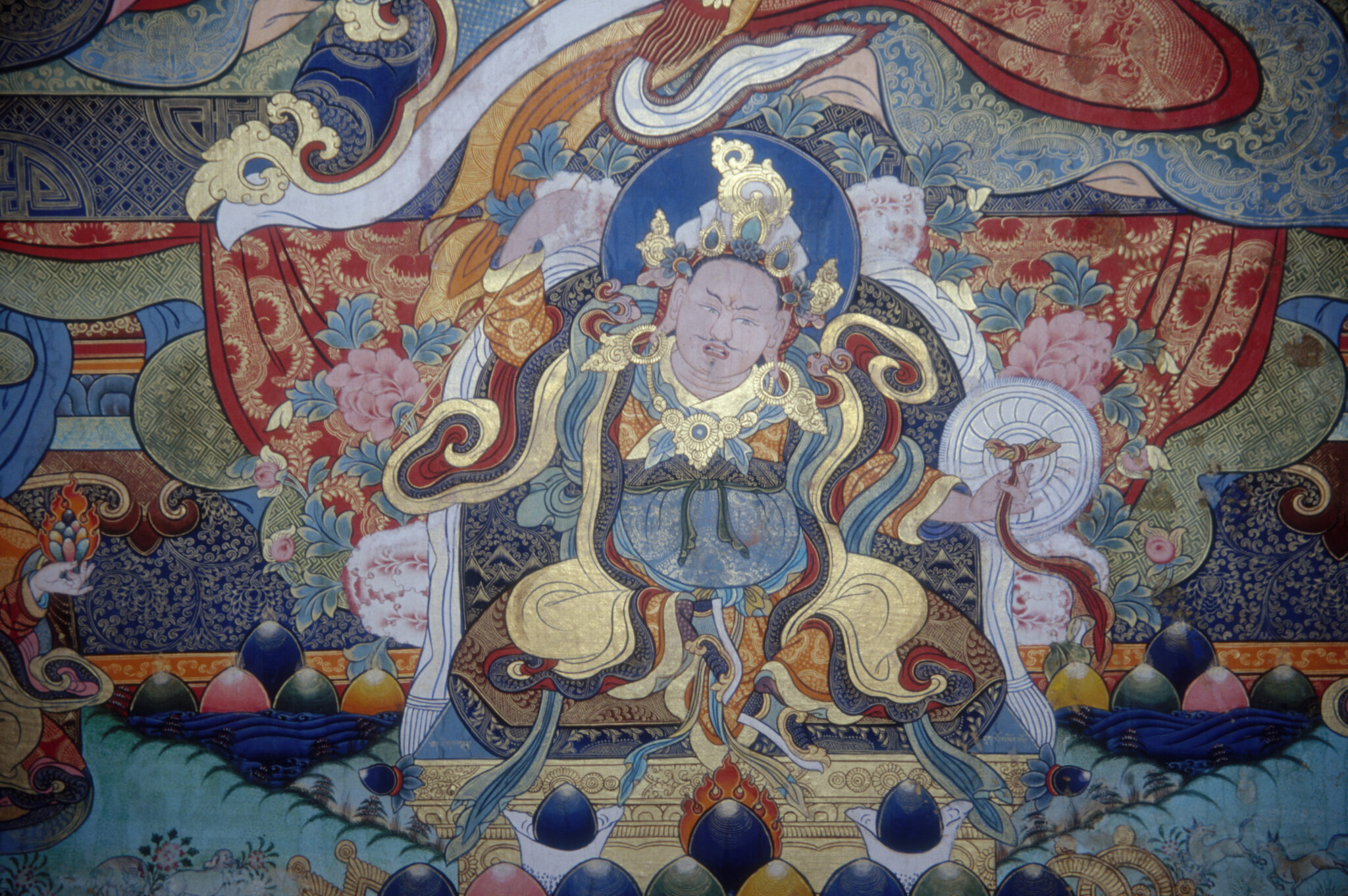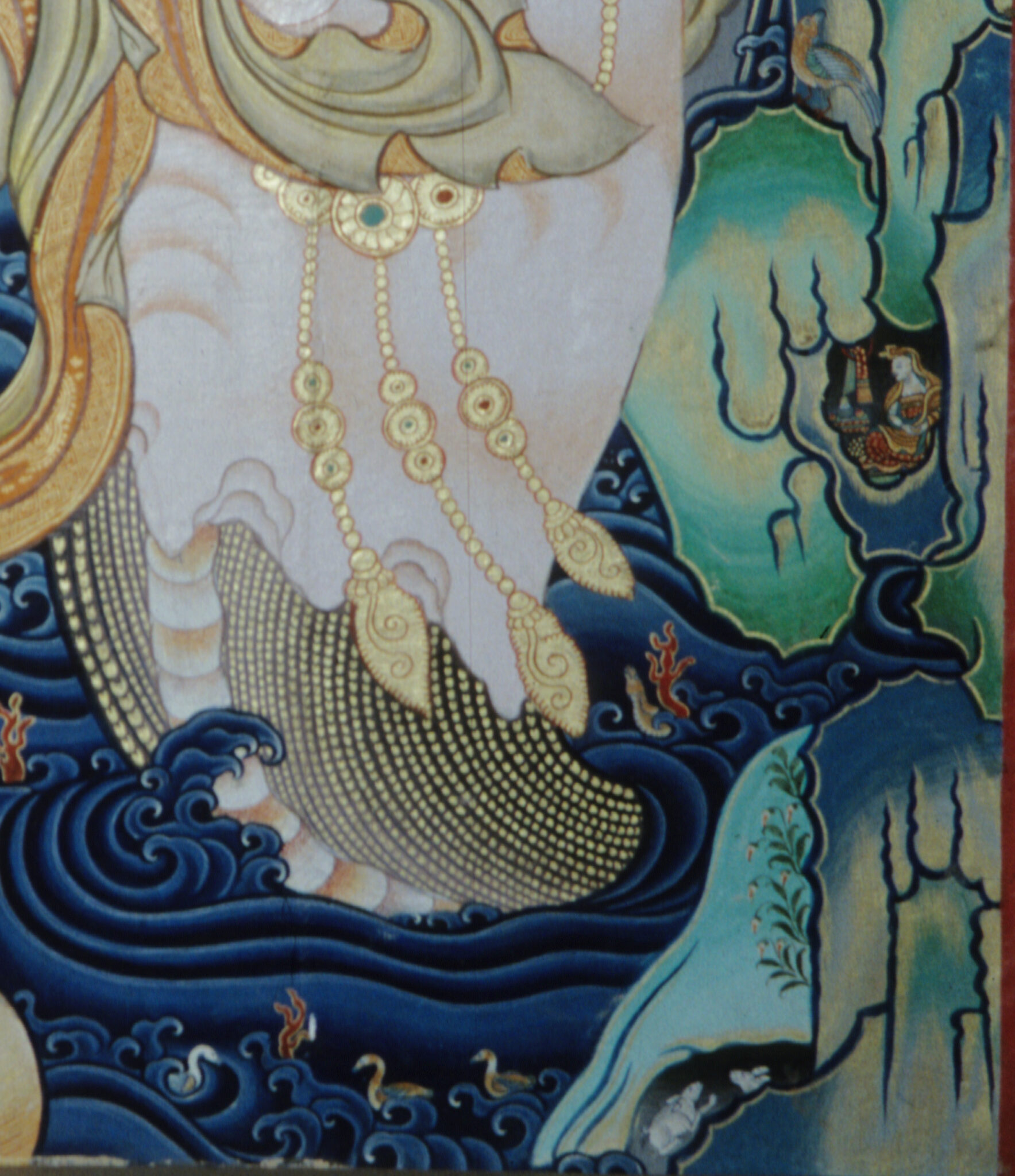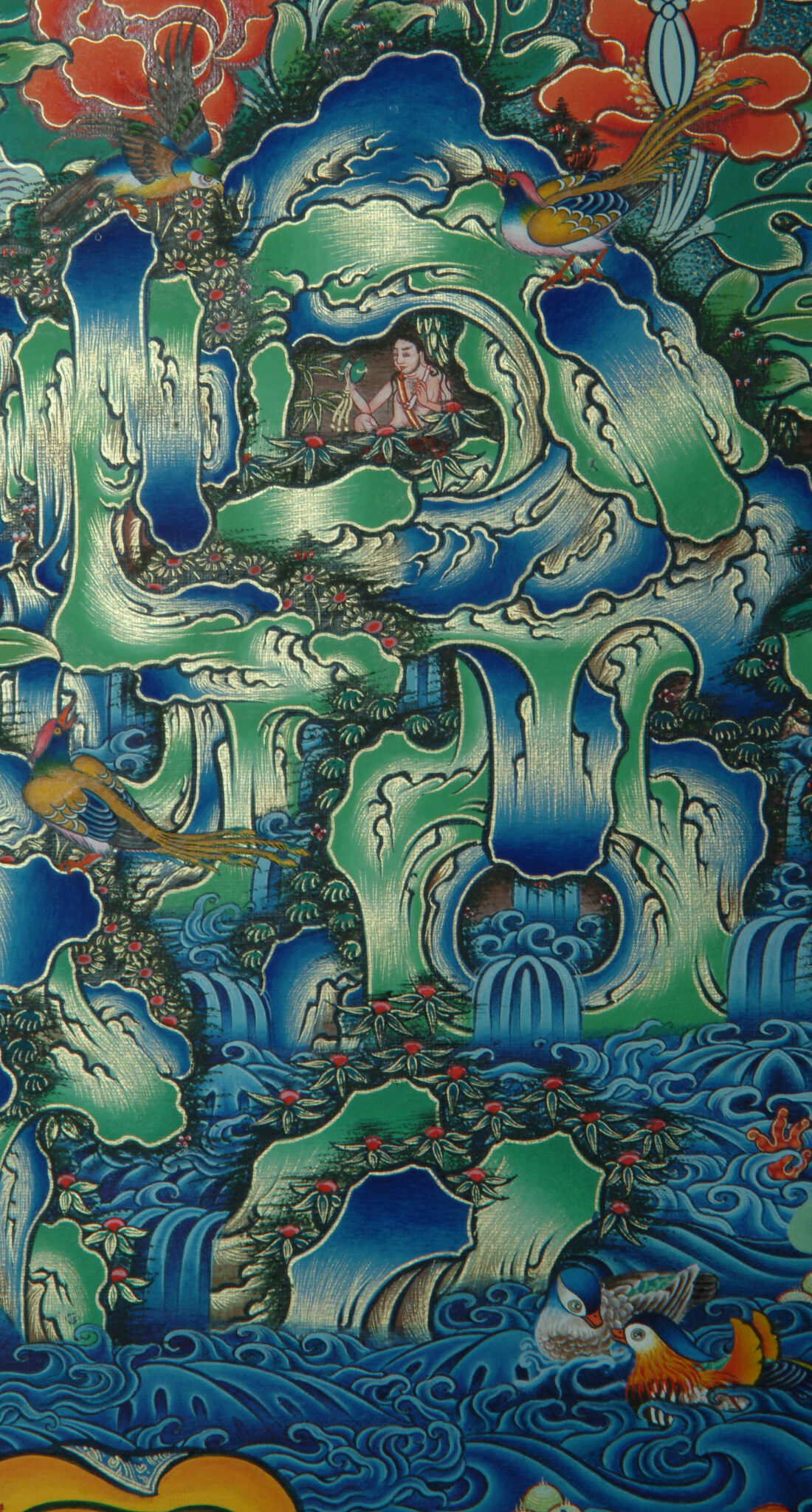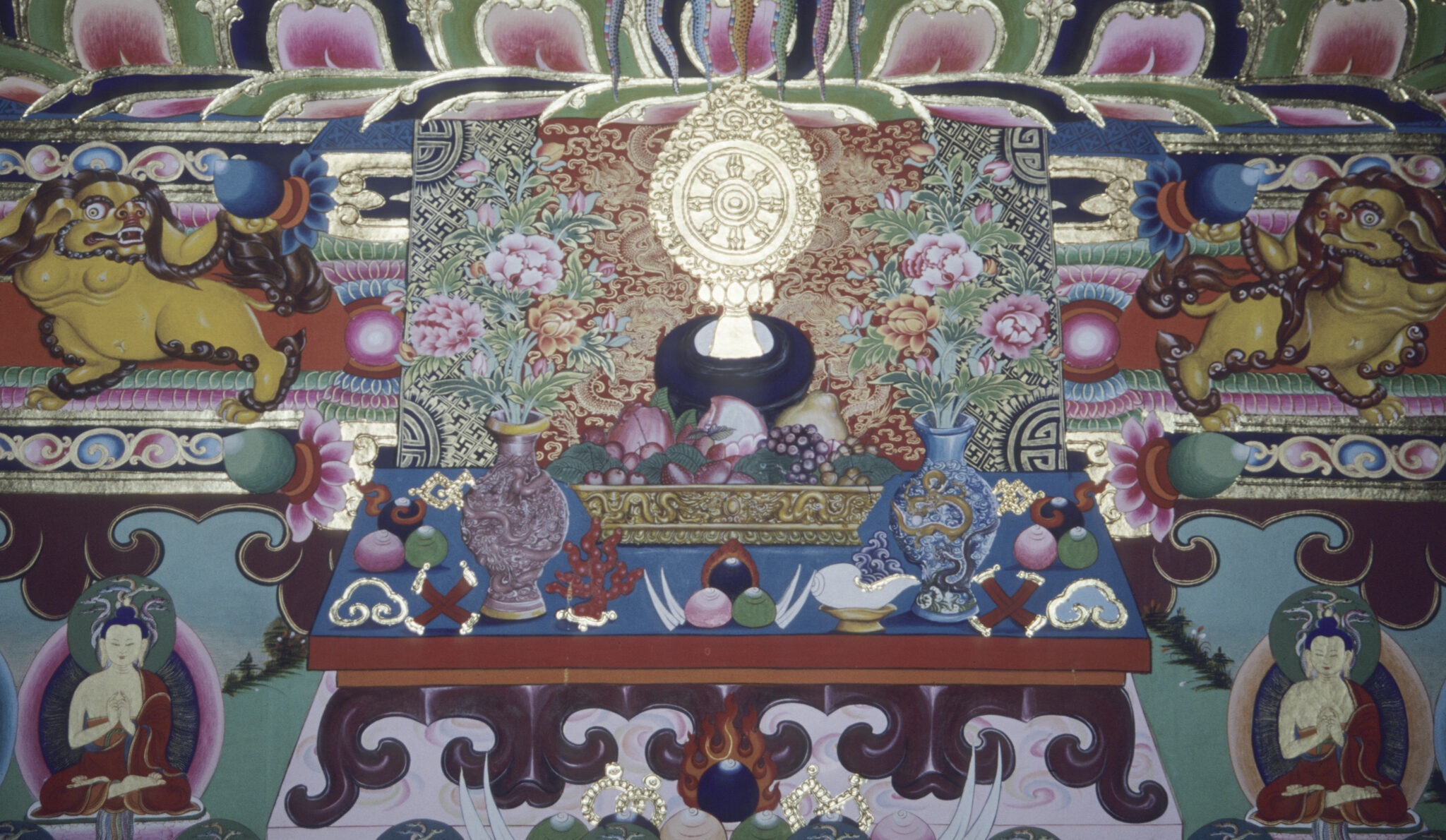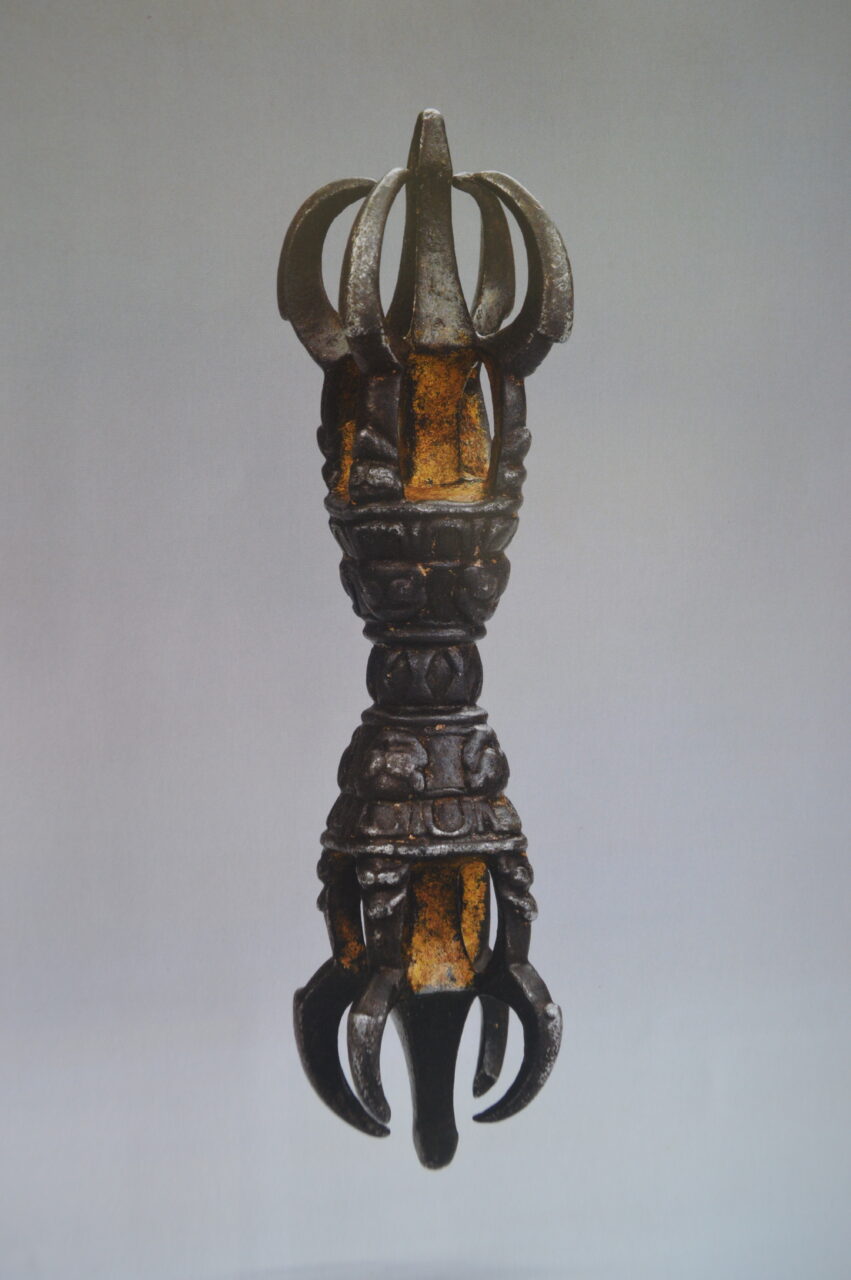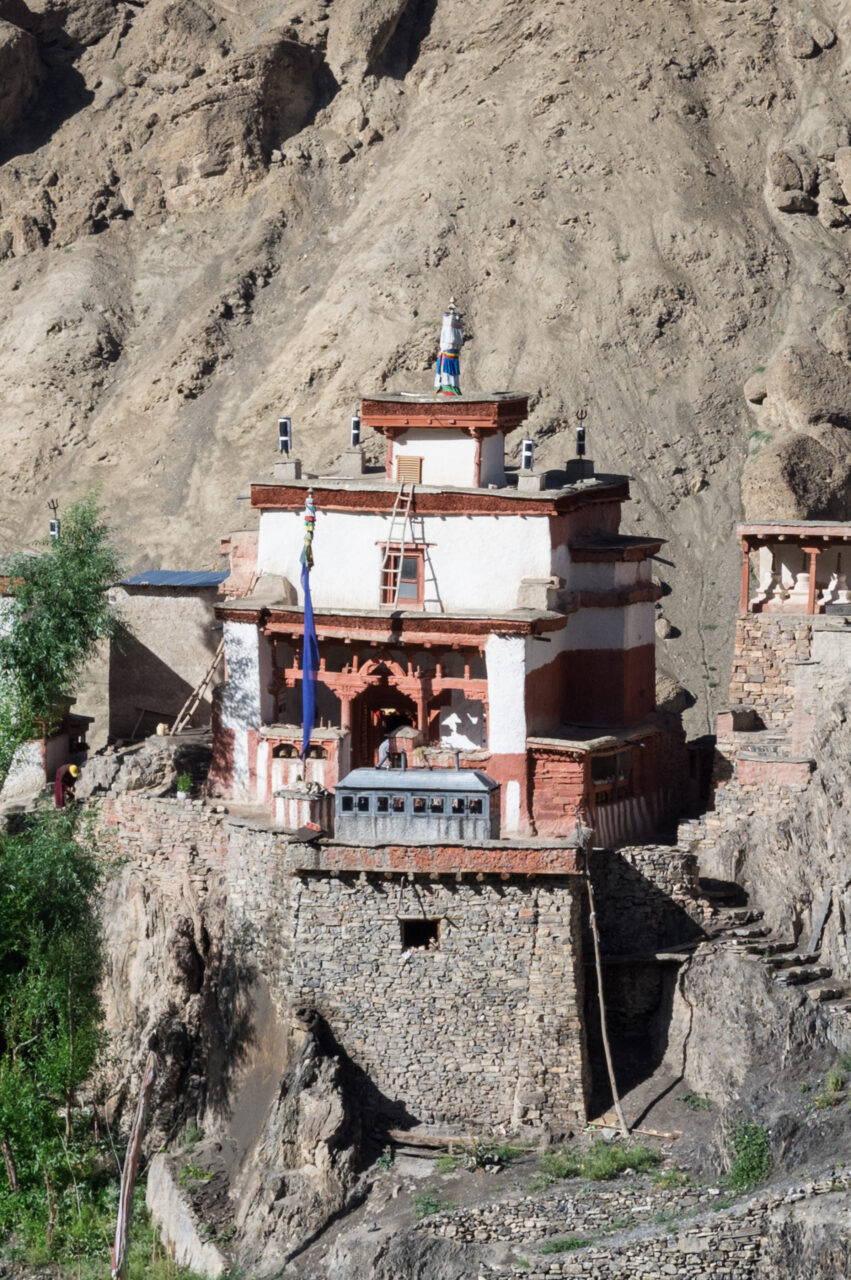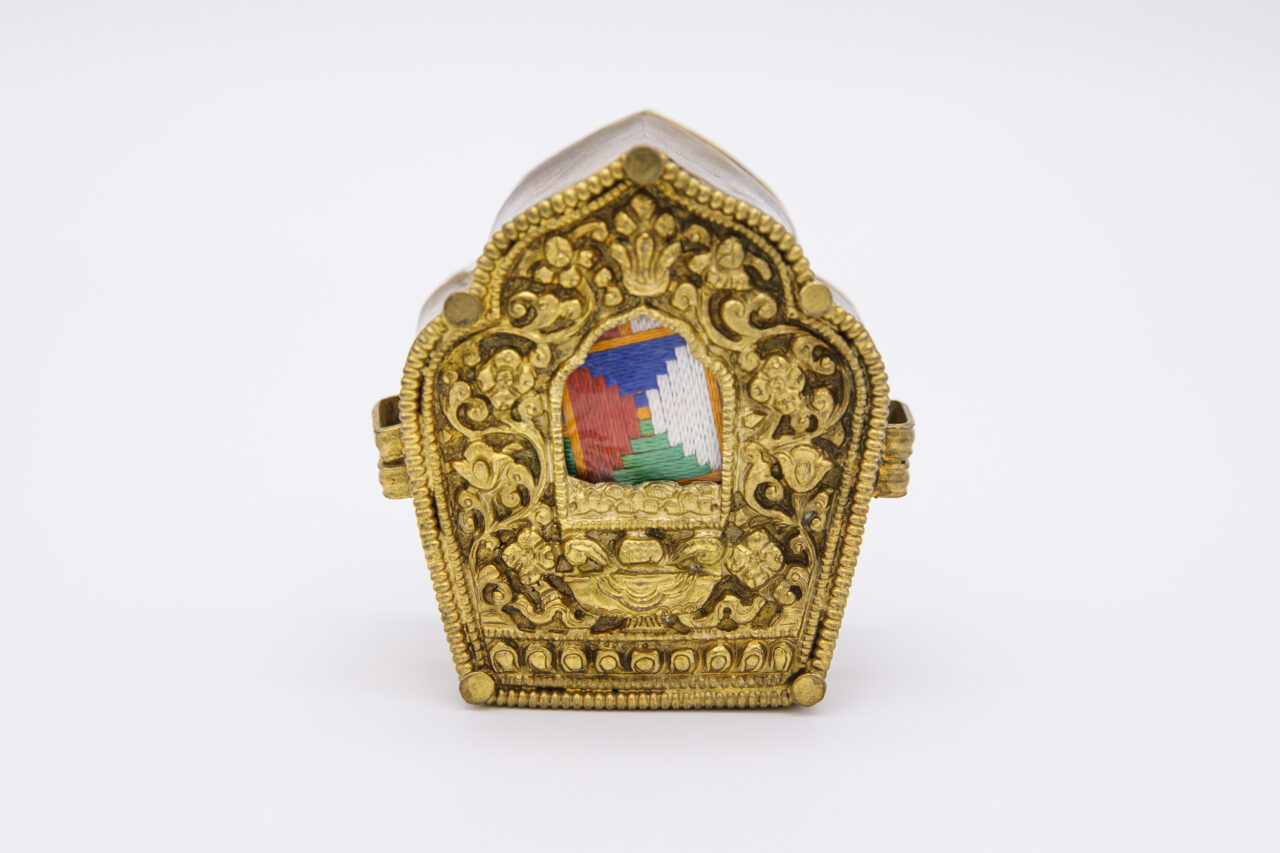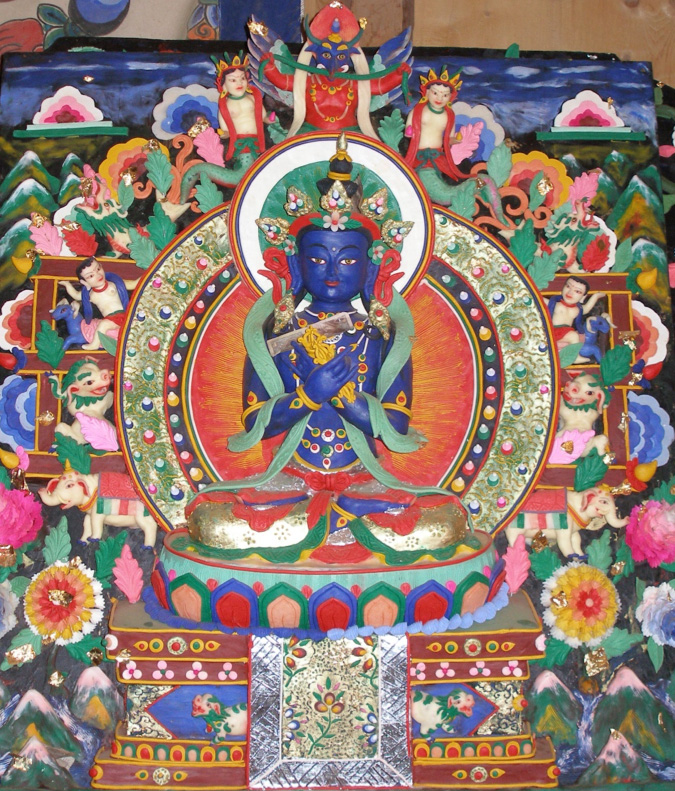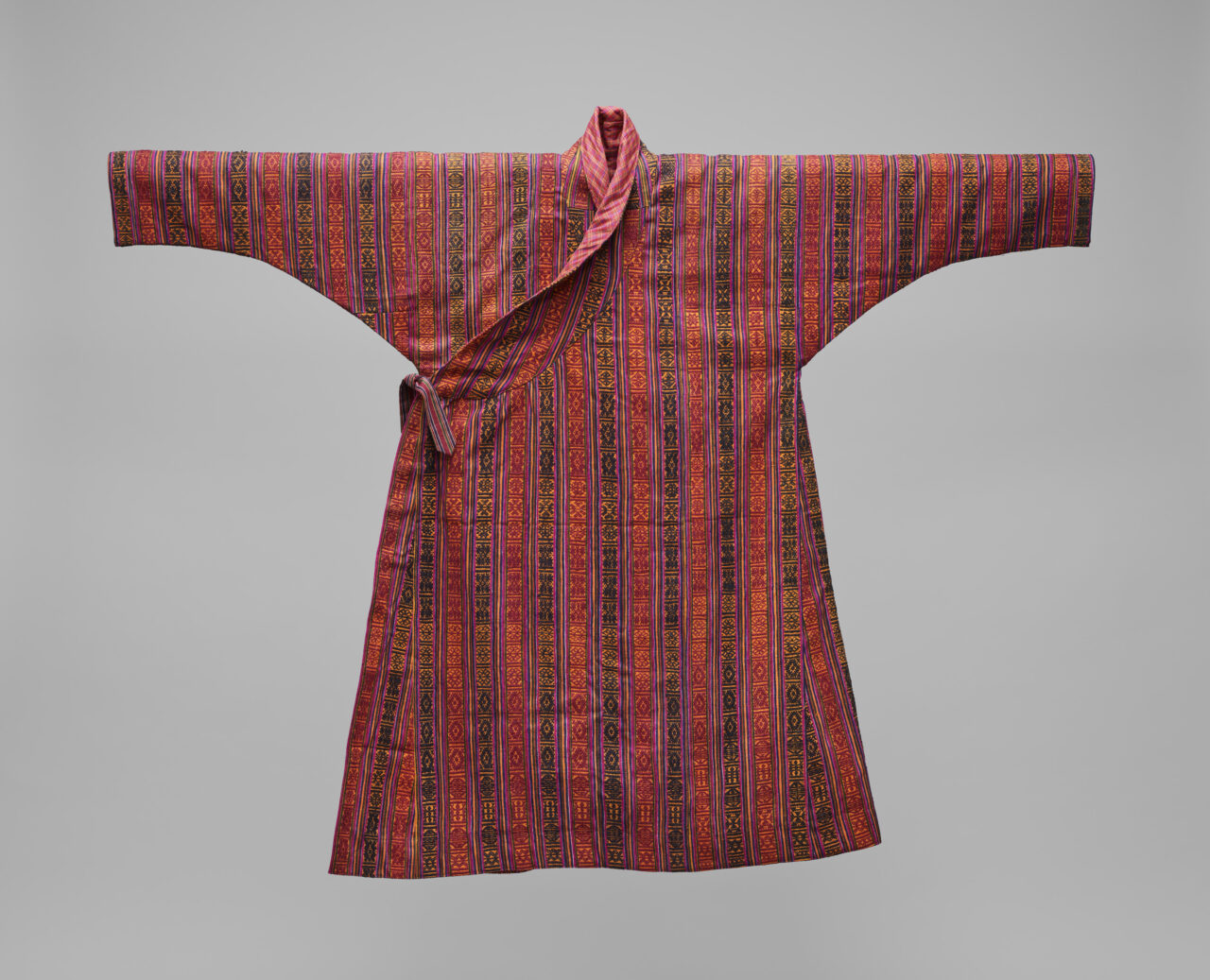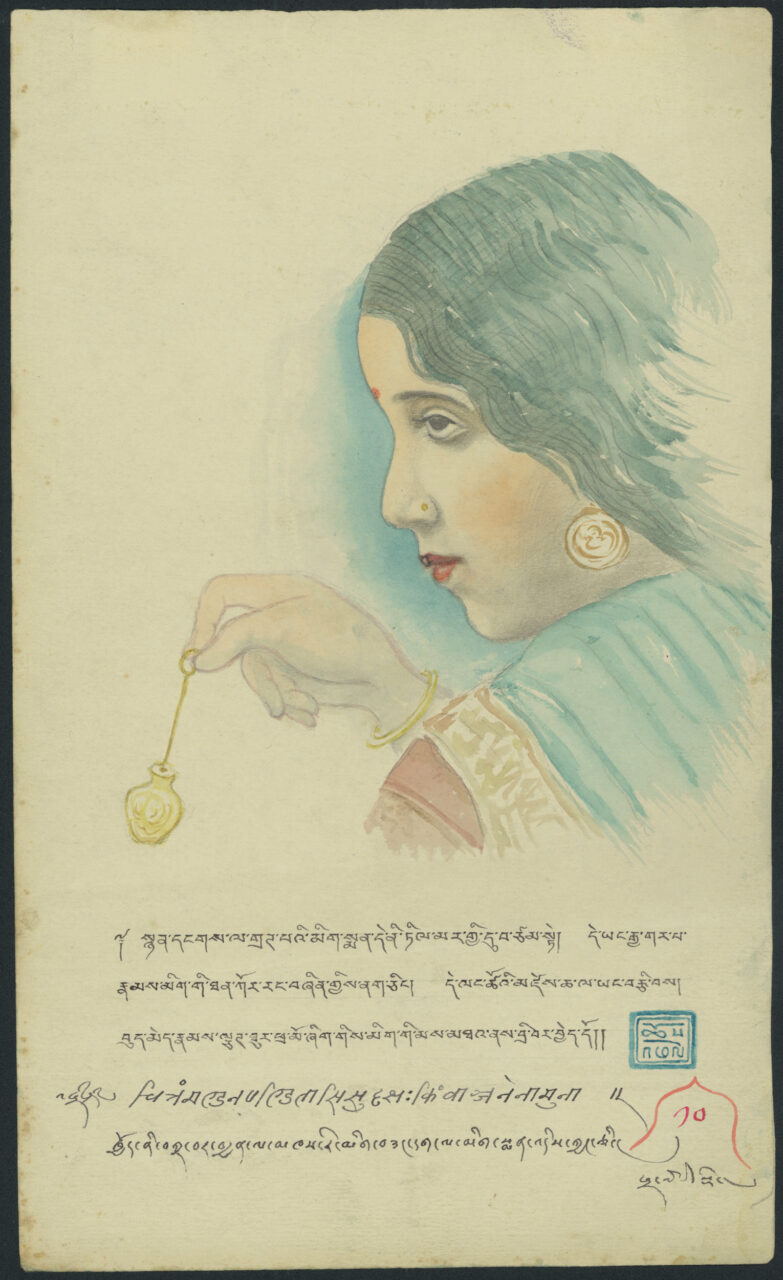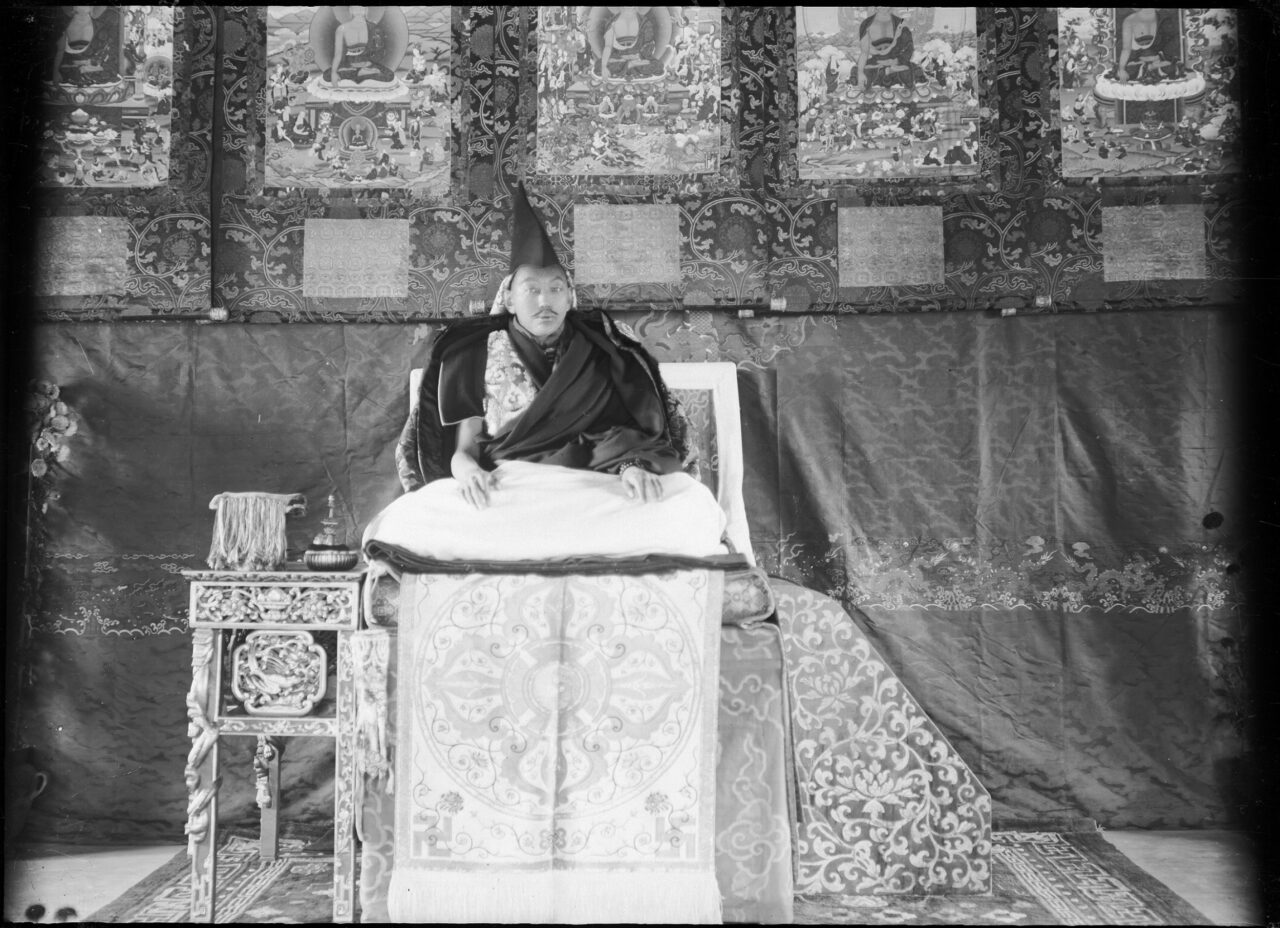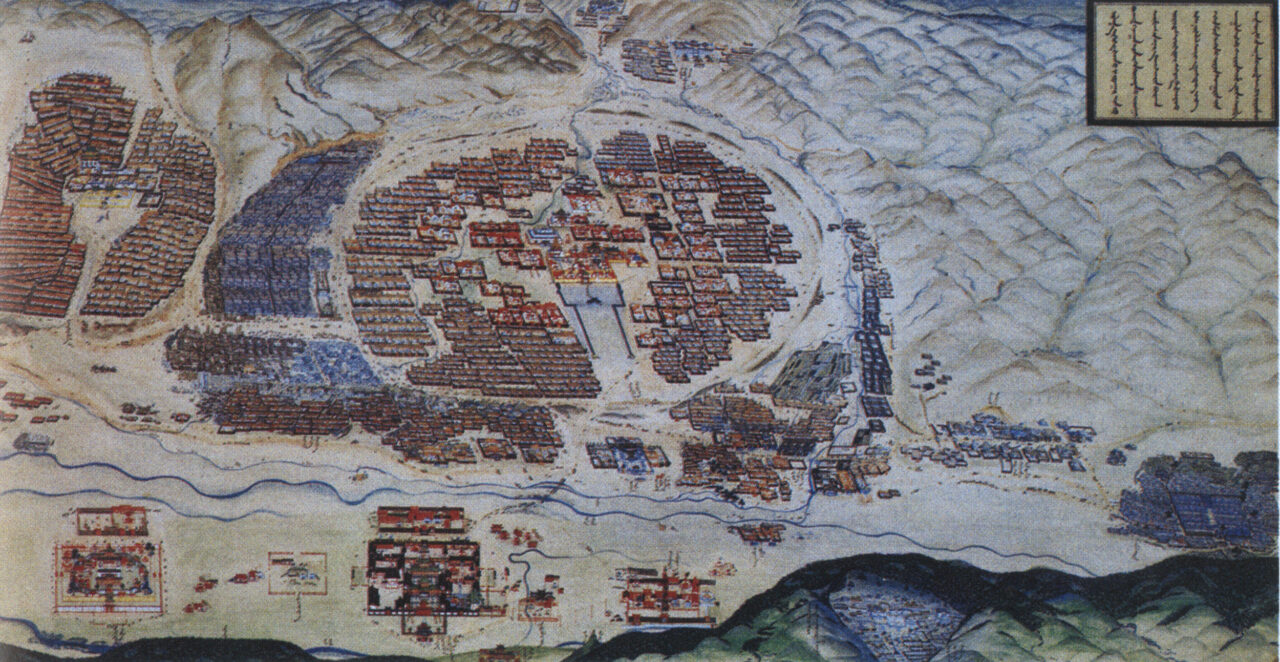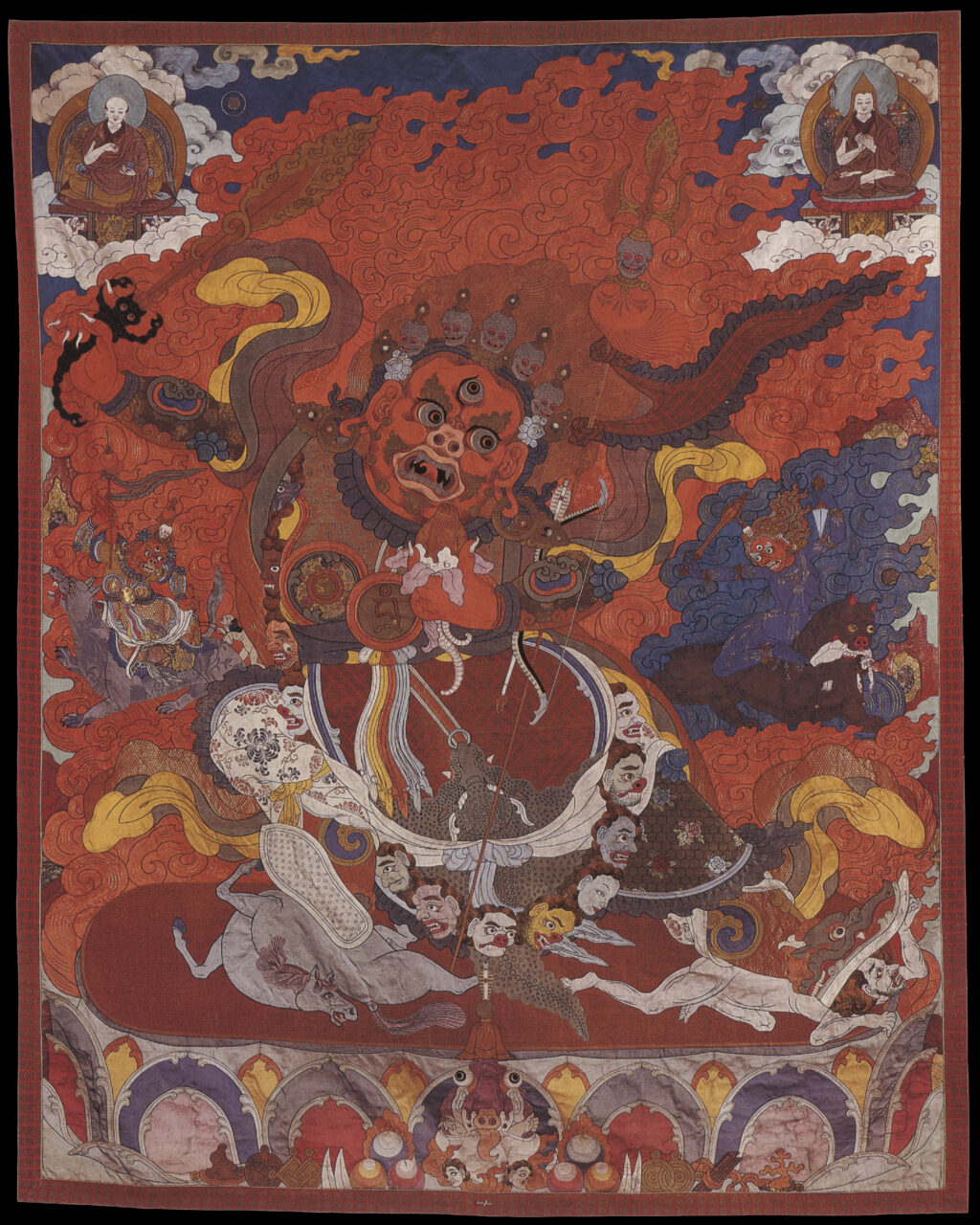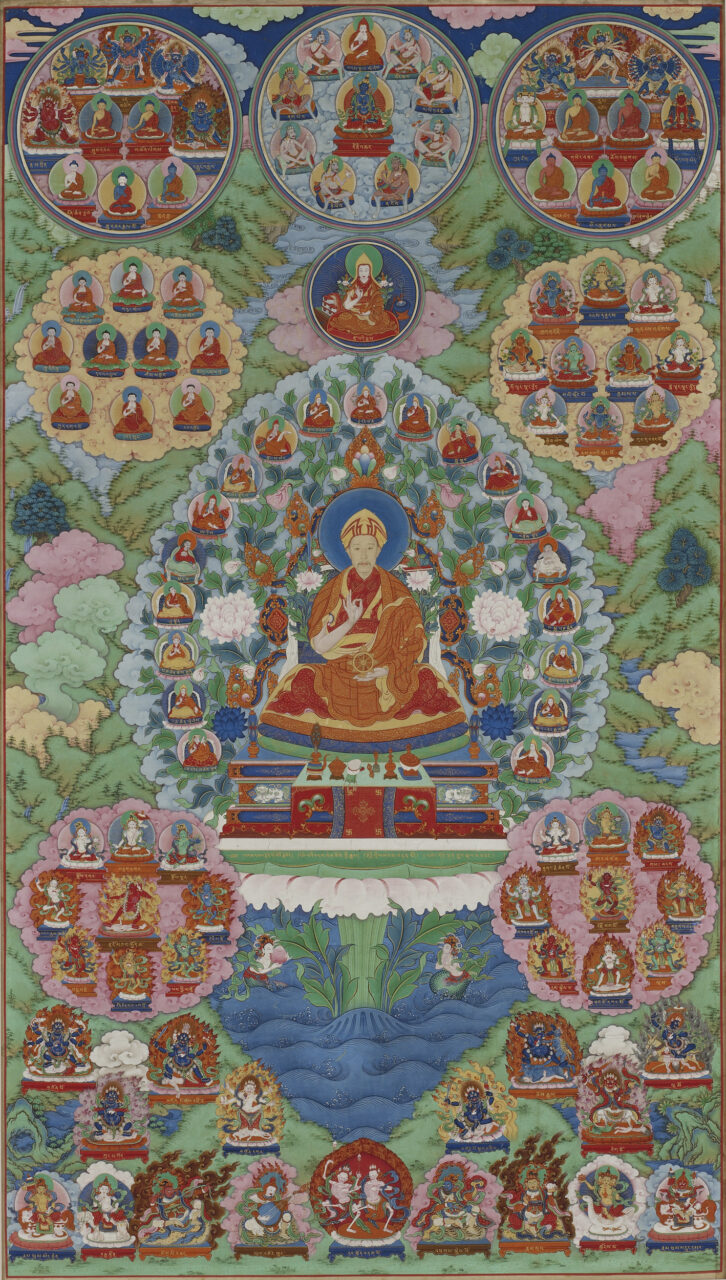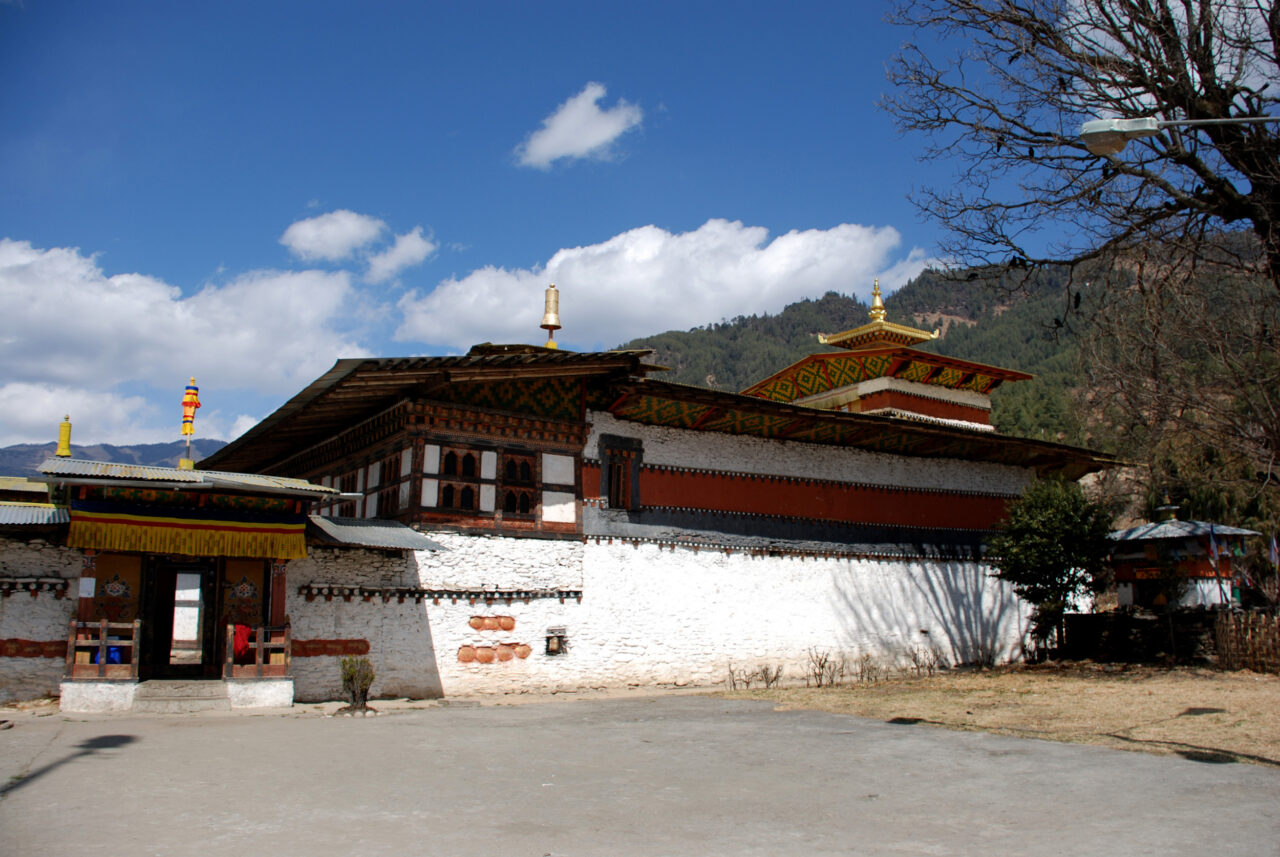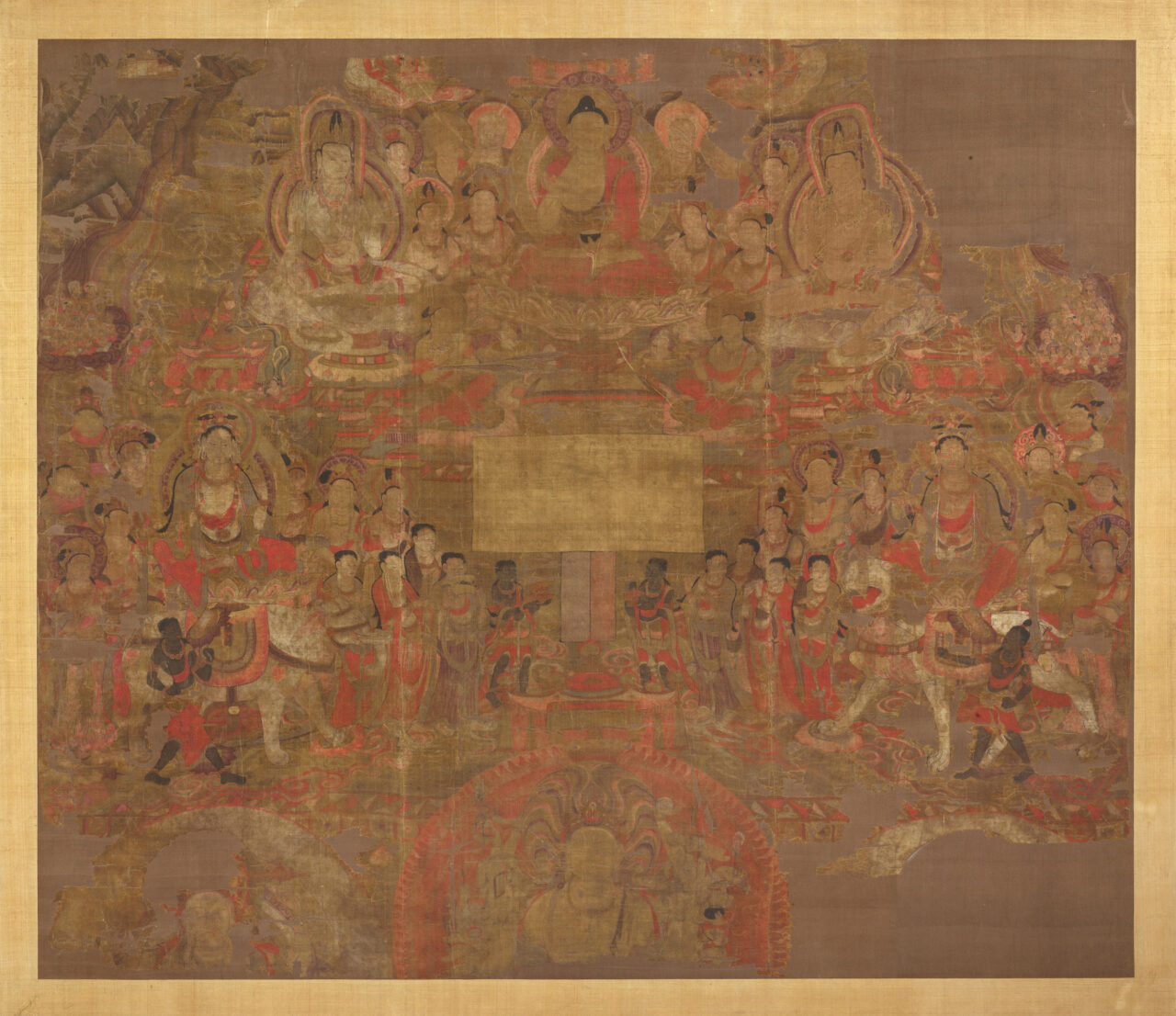The Cultural Revolution was a political and social movement in communist China from 1966 to 1976. During this time, traditional culture across all of China came under violent attack, and almost all religious institutions were shut down and many were physically destroyed. In minority areas, ethnic differences and indigenous cultural practices, such as use of Tibetan language or dress, were seen as backward and subject to persecution, adding an additional racial dimension. Hundreds of thousands of Tibetans fled to India or Nepal, and many Himalayan artworks were destroyed or scattered abroad.
Kalachakra refers to both the name of major Highest Yoga tantra texts and the central deity, which is the focus of these texts, depicted as a multi-armed figure in tantric union with his consort Vishvamata. The tantra’s elaborate cosmology addresses three wheels of time—the outer, inner, and the other. The outer wheel of time refers to the external world, procession of the external solar and lunar days, or the macrocosm. The inner wheel of time refers to the human body or the microcosm of the inner channels, elements, and wind movements. And the other wheel is the initiation into the paths and the practice. According to the text the Buddha first taught, the Kalachakra tantra in the mythical Buddhist realm of Shambhala to chakravartin kings who rule there.
In Buddhism, Vaishravana is the guardian king (lokapala) of the north, one of the four guardian kings who are often found at the entrances to temples. Vaishravana is also sometimes worshiped as a wealth deity and at times as a martial deity. Depending on the emphasis, he is depicted as an armored warrior, often mounted on a lion, carrying a mongoose or holding a stupa/pagoda.
In Vajrayana Buddhism, Vidyadhara is a term of respect for an accomplished master of yogic meditation, one who can transmit important tantric initiations.
According to the Kalachakra Tantra, Shambhala is a sacred mythical land in the north where Buddhist kings rule. At the end of our eon, these kings are prophesied to ride out from their mountain-ringed kingdom to destroy enemies of the Buddhist Dharma. In Tibetan and Inner Asian contexts, these enemies are often understood to be Muslim, viewed as the destroyers of Buddhism in India, but the Shambhala myth has often adapted to contemporary crises, and have been reinterpreted to any threat to Buddhism, or the state, including British forces in the Boxer Rebellion, or the Communists. Many individuals and states in history, including Mongol khans, the Russian tsars, and even the emperor of Japan have been identified as the savior-kings described in these prophecies.




